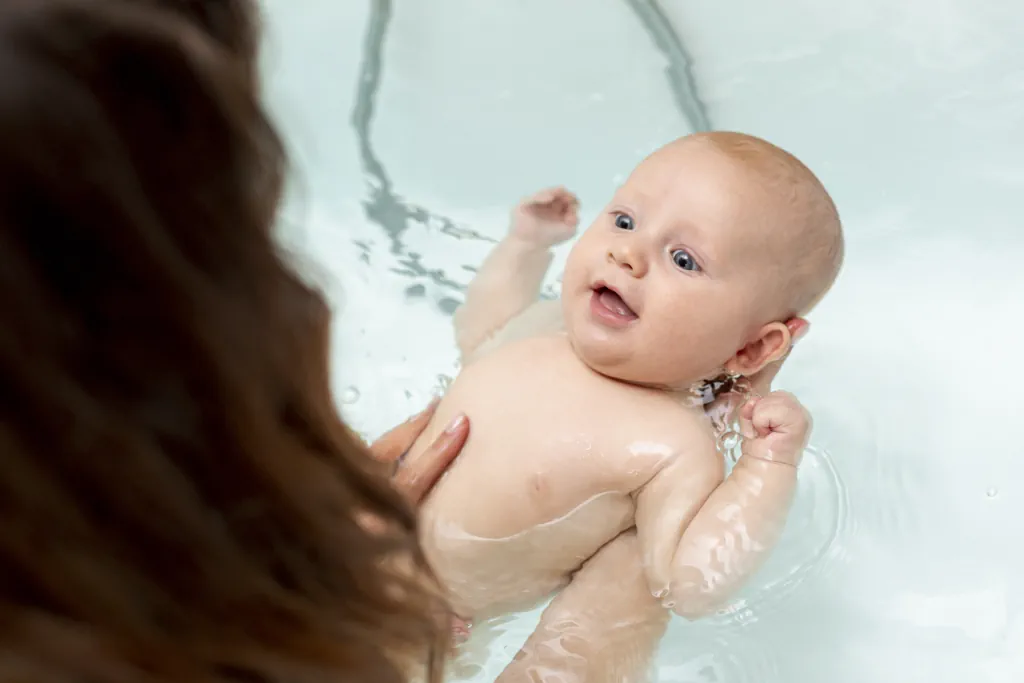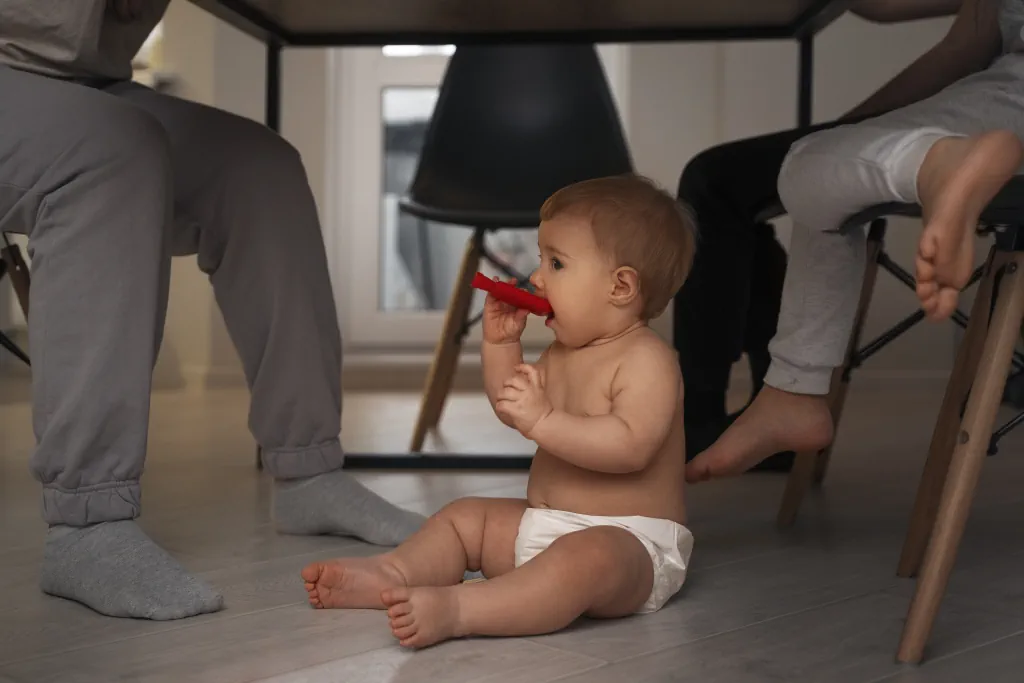Why Clean Living Matters in Baby Diapering
In 2025, parents are more informed and proactive than ever about the products they use for their children. Diapering, one of the most frequent routines in a baby’s life, plays a significant role in a child’s health and comfort. Clean living in diapering goes beyond choosing a well-known brand — it’s about selecting products that are non-toxic, eco-friendly, ethically produced, and safe for sensitive baby skin. Clean diapering reduces the risk of irritation, allergic reactions, and long-term environmental damage. This guide walks you through everything you need to know to build a safe and sustainable diapering routine that aligns with your family’s clean living values.
What Makes a Diapering Product ‘Clean’?
A clean diapering product avoids harsh chemicals and uses skin-safe, natural, or organic ingredients. Look for diapers, wipes, and creams that are free from chlorine, parabens, phthalates, fragrances, and dyes. Many top-rated clean products are biodegradable, hypoallergenic, and certified by organizations like EWG (Environmental Working Group), USDA Organic, or OEKO-TEX®. Clean living diapering products are not only safer for your baby’s skin, but they also significantly reduce landfill waste and carbon footprints when biodegradable or compostable. Reading the ingredient list is essential—avoid greenwashing by verifying third-party certifications and understanding what clean actually means.
Clean Disposable Diapers: Safe and Sustainable Picks
Disposable diapers don’t have to be harmful to the environment or your baby’s skin. Today’s clean options combine high absorbency with plant-based materials, breathable design, and minimal synthetic additives. Brands like Coterie, DYPER, Hello Bello, Bambo Nature, and Andy Pandy are leading the way. These diapers often use chlorine-free fluff pulp, renewable bamboo, and leak-proof materials without unnecessary chemicals. Most also offer carbon-neutral shipping, composting services, or minimal packaging. While clean disposables may cost more, they offer peace of mind and health benefits worth investing in. They’re especially ideal for parents looking for convenience without compromising their clean living standards.
Clean Reusable Cloth Diapers: A Greener Alternative
Cloth diapering is experiencing a resurgence, especially among eco-conscious families. Reusable cloth diapers drastically reduce waste and are free from synthetic absorbent gels or fragrance-laden linings. Top clean brands include Esembly, Thirsties, GroVia, and Charlie Banana, offering options made from organic cotton, bamboo, and hemp. These materials are gentle on the skin and naturally antimicrobial. Cloth diapers come in multiple styles: all-in-ones, pocket diapers, and prefolds. Though initial setup may seem daunting, modern cloth systems are simple to wash and dry with eco-friendly detergents. Over time, cloth diapering becomes a cost-effective and sustainable option that aligns perfectly with clean living goals.

Diaper Wipes: Clean Ingredients and Best Practices
Baby wipes are used multiple times a day, making ingredient transparency vital. Conventional wipes may contain alcohol, parabens, and preservatives that irritate sensitive skin. Clean wipes rely on water-based formulas enriched with aloe vera, chamomile, or coconut extract. Brands such as WaterWipes, Pipette, Coterie Wipes, and Burt’s Bees Baby deliver gentle cleansing without unnecessary additives. Many of these are biodegradable and come in recyclable packaging. For DIY-minded parents, reusable cloth wipes and homemade cleansing solutions offer a truly zero-waste alternative. The key is avoiding harmful preservatives and opting for pure, hydrating, and hypoallergenic solutions.
Clean Diaper Creams and Skincare Products
A good diaper cream forms a protective barrier while supporting skin healing—but not all are created equal. Clean diaper creams steer clear of petroleum, artificial fragrances, and mineral oils. Instead, they rely on calendula, shea butter, zinc oxide (non-nano), and beeswax. Brands like Earth Mama, Badger, Weleda, and Babo Botanicals use certified organic ingredients to create effective and gentle formulas. These creams soothe diaper rash while promoting long-term skin health. It’s important to apply sparingly and patch-test when introducing a new product. Clean creams provide daily protection and fast recovery from common skin irritations without synthetic chemicals.
Accessories That Support Clean Diapering
Beyond diapers and wipes, accessories play a big role in maintaining a clean diapering routine. Consider eco-friendly diaper bags made from recycled materials or organic cotton. Non-toxic diaper pails use charcoal filters or baking soda instead of chemical deodorizers. Washable changing pad covers, organic cotton liners, and bamboo burp cloths can all reinforce your clean living setup. Clean hand sanitizers and surface sprays for your diapering area—especially alcohol-free and plant-based ones—ensure that you’re creating a safe hygiene environment without overexposing your baby to chemicals. These supporting products help maintain a toxin-free zone while simplifying daily routines.
Tips for Transitioning to a Clean Diapering Routine
Switching to clean diapering doesn’t have to be overwhelming. Start with one category—such as wipes or diaper cream—and slowly replace products as you run out. Research brands and read reviews from parents with similar values. Be cautious of “natural” branding and always look for certifications. Gradual transition allows you to monitor how your baby’s skin reacts and adjust accordingly. Organize your changing station with bins or baskets to clearly separate clean products. Engage your caregiver or daycare provider to ensure consistency. With small, thoughtful changes, you’ll build a routine that supports both your baby’s health and the planet.
FAQs About Clean Living Diapering Products
Q: Are clean diapers as effective as conventional ones?
A: Yes. Clean diapers from trusted brands offer similar—sometimes better—absorbency and fit without harsh chemicals.
Q: How can I tell if a diaper brand is truly clean?
A: Look for third-party certifications, full ingredient transparency, and customer reviews. Avoid vague marketing terms like “natural.”
Q: Are cloth diapers more work?
A: They require laundry, but modern cloth diaper systems are simple, quick-drying, and come with easy-to-use liners and snaps.
Q: Can I mix clean and conventional diapering products?
A: Yes, many parents use a hybrid approach. For example, using cloth at home and clean disposables when traveling.
Q: What’s the cost difference between clean and conventional products?
A: Clean products are often slightly more expensive, but they offer health and environmental benefits that many parents value.
Conclusion: Making the Best Clean Choices for Your Baby
Clean living diapering is more than a trend—it’s a commitment to safer parenting, healthier children, and a greener future. With an increasing number of clean diapering products available in 2025, making informed choices has never been easier. From plant-based diapers to biodegradable wipes and organic diaper creams, every small decision adds up to a more conscious lifestyle. Start with one product, explore what works for your baby, and embrace the journey toward a cleaner, more responsible diapering routine. Your baby—and the planet—will thank you.
Read also the article: How to Properly Bathe a Baby: Essential Safety and Care Tips for New Parents and Best Baby Strollers for Newborns in 2025: Safe, Stylish & Parent-Approved Picks and Breastfeeding in 2025: Tips for a Successful Start and Best Baby Toys for 6 Month Olds in 2025: Top Picks
Note: This article is for informational purposes only and is not a substitute for professional advice. While every effort has been made to ensure that the content is accurate and useful, the portal does not guarantee the complete accuracy of all information. For specific cases and personalized solutions, we recommend consulting with a licensed professional in the relevant field.

